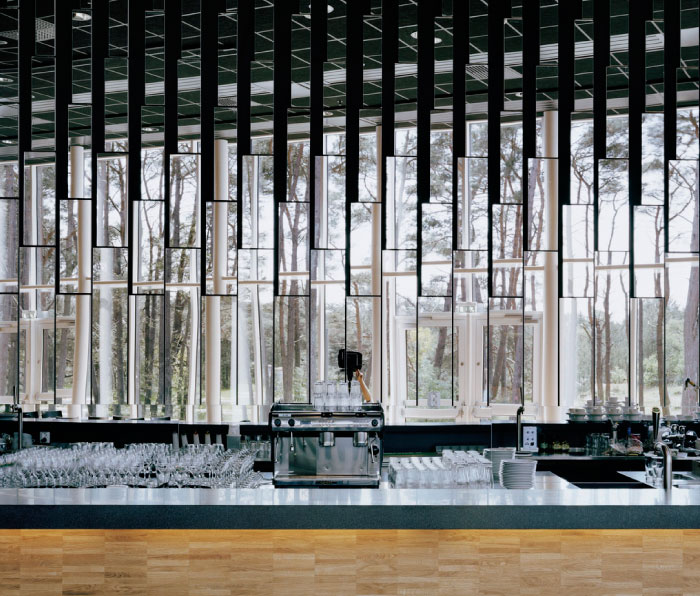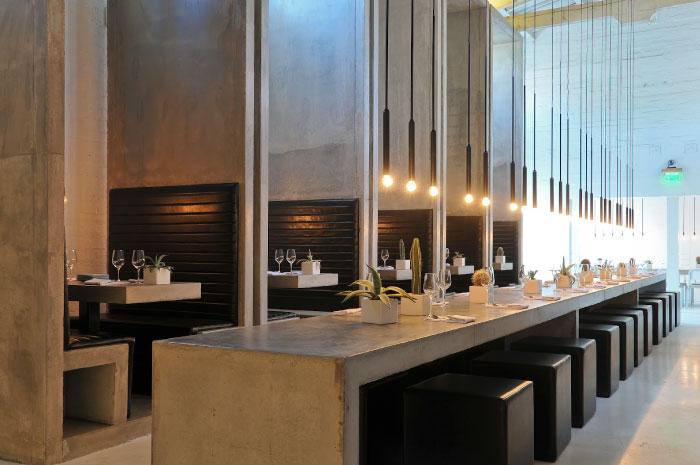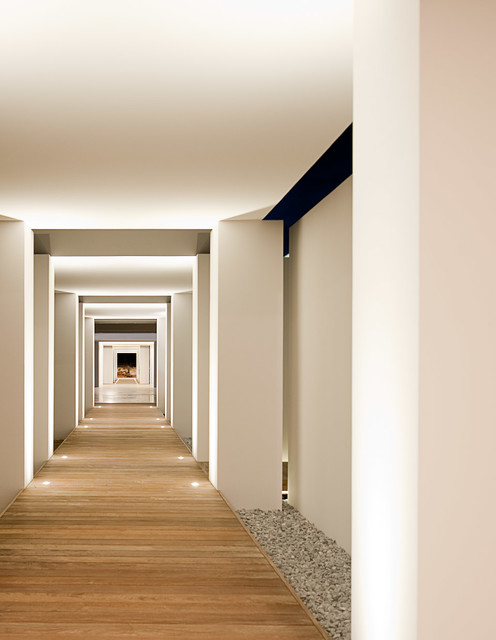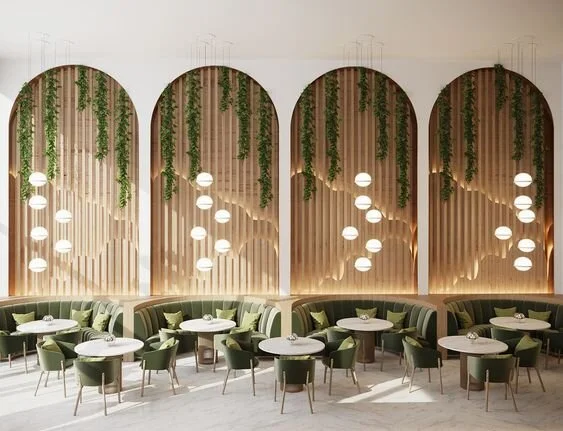Gradation Gradation refers to the process of uniformly reducing or increasing the size height or width of objects in the room. Contrast More 424 People Used More Info Visit site.

Principles Of Interior Design Part 2 Rhythm
There is actually more to the interior design theory of rhythm.

. Transition Curved lines are a good example of this type of rhythm. Examples are a gradation of colour or a series of objects that start small and become large in a very regular manner. Show examples if necessary.
Then take a step back. Examples of harmony in interior design. Rhythm and repetition is the idea of creating movement and harmony throughout your space with recurring patterns colors and different elements.
Repetition is the repeated use of a particular design element or structure. Traditionally there are three types of rhythm you can use in your interior design. Today we will discuss rhythm and how you create rhythm in interior design.
They have been discovered and refined over the course of history and are considered elementary and critical to all fine-art. The barajas airport by richard rogers and estudio lamela is an excellent example of rhythm achieved through repetition and progression of colour. Harmony in visual design means all parts of the visual image relate to and complement each other.
Think of a camelback sofa for example a curved headboard or an archway. It is the visual harmony within a design and it can help create more attractive and successful websites. The use of the same accent colors the same metal finish carried throughout a room or entire home the same color or tone of paint used on walls and trim throughout the entire interior of a home the same counters used in.
Transition Curved lines are a good example of this type of rhythm. Alternating Flowing Progressive Random and Regular. Balance depends upon visual weights of the architectural and interior elements -- visual weight is determined by the psychological impact an element makes on us and the the attention it demands.
It can be seen in round tables and seating areas where the furniture is grouped around a central object. Repetitive rhythms are easy to create with the same colour echoed in a throw pillow a rug and a frame on the wall. Rhythm examples of rhythm Rules creating rhythm in design.
A common example is alternating black and white pillows on a sofa. For example walking in a hallway with continuous floor lights is a classic example of repetition in interior design. Rhythm can also be achieved through progression.
Transition Rhythm through transition gently leads the eye through a continuous uninterrupted flow from one area within a space to another. With a curved line your eye gently transitions or travels from one object to another. Sound overtone timbre pitch amplitude duration Melody.
The principles of design relate to how you use these elements. Rhythm is how well you execute repetition. An example of repetition is pictured above.
Design ElementsThe elements discussed here are used by artisans of all types painters sculptors photographers interior designers etc. Rhythm - A visual tempo or beat. The more you do the more confidence you will feel about using rhythm in your home and the better decorator you will be.
Rhythm is related movement that directs the eyes towards the lines suggested in the pattern they make. Repetition is apparent in the wooden beams in the lighting fixtures and in the placement of the windows. While this is the most mathematical interior design principal your eye can easily identify when something looks out of place.
Harmony in interior design. Serious interior designers should not stop until they feel the appropriate level of rhythm was achieved within a space. 4th-8th grade art lesson on the principle of art called rhythm.
Use opposite elements such as black and white pillows to create a rhythm. What are the 12 elements of music. Put the design element of rhythm into practice.
Put together a small vignette that has great rhythm. In addition to this rhythm plays an important role in interior design as it helps in how the viewer perceives the space in terms of functionality and appearance. Explain that rhythm is the element of design that moves the eye from one place to another.
Repetition can take the form of an exact duplication such as a pattern background image. Harmonious design is an interior design firm delivering intelligentharmony can be achieved through repetition and rhythm. Rugs ground the space so its important to choose the correct size.
Principles of Design Rhythm By Radiation 24. The principle of design that refers to a regular repetition of elements of art to produce the look and feel of movement. This facilitates the easy transition of the eye from one end of the space to another.
There are three ways to create rhythm in interior design. It can be as simple as using a shape for instances a circle giving it the same color but having the circle vary in size. The principles of interior design are balance emphasis rhythm proportion and scale and harmony and unity.
View Rhythm In Interior Design Examples Background. Students design their give an example of rhythm in. Aside from colour you can repeat the use of the same textiles or the placement of similar objects around the room.
There are 5 different methods of showing rhythm. Rules that create rhythm can be described as a set of In graphic design Figure 9 is the example of flowing rhythm in Rhythm and Repetition Painting Art Lesson. Progression 45 Interior design elements placed according to size from smaller to bigger ones or perhaps according to the gradient of their colours.
A few examples of interior design rhythm repetition and movement could be. Exactly what is harmony you ask. Today she will cover the final principal of interior design.
The rhythm in most interior designs is based on one of five principles. Present the teacher information on rhythm using the rhythm lecture notes and the rhythm power point presentation. A space that has steady rhythm and repetition will lead the eye around.
The importance of rhythm in interior design Rhythm is one of the basic principles in interior design and commonly used to help the eyes move around the room in an organized manner. For example you wouldnt pair a small love-seat with a large overstuffed lounge chair because it would appear disproportionate. Using colors opposite each other on the color.
Radiation is an element of rhythm in interior design which is created when several design elements come together to form a balanced rotation around a centre point. What is repetition color. Opposition Using opposites can create an interesting and pleasing effect in your decor.

What Is Rhythm In Interior Design Learn To Apply Tilen Space

Principles Of Interior Design Part 2 Rhythm

Principles Of Interior Design Part 2 Rhythm

Basic Interior Design Principles Everyone Should Know Brumbaugh S

What Is Rhythm In Interior Design Learn To Apply Tilen Space

5 Ways Rhythm Engages Your Eye

What Is Rhythm In Interior Design Learn To Apply Tilen Space

0 comments
Post a Comment